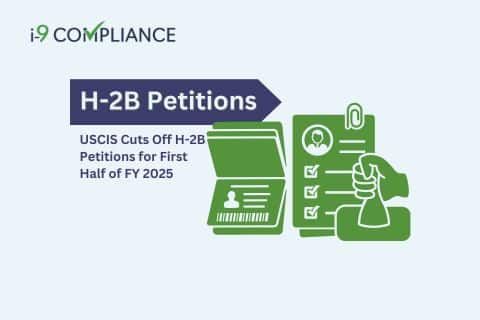USCIS Cuts Off H-2B Petitions for First Half of FY 2025

The United States Citizenship and Immigration Services (USCIS) recently announced that it reached the Congressionally-mandated H-2B visa issuance cap. This success means the first half of the 2025 fiscal year is set. As such, the USCIS will no longer accept cap-subject petitions for this timeframe.
This announcement applies to all cap-subject petitions for H-2B non-agricultural positions with an intended start date before April 1, 2025. The USCIS marked September 18, 2024, as the cutoff date for the first half of 2025’s fiscal year, preventing further petitions for the cap-subject H-2B positions beyond this time. As such, the USCIS will reject all H-2B applications for positions with the start date before April 1, 2025.
Under federal law, Congress has limited the number of issued H-2B visas in a fiscal year to 66,000. The government evenly distributes these visas for both halves of the fiscal year. As such, 33,000 visas will apply to those starting work between October 1 and March 31. The remaining visas will go to those starting between April 1 and September 30.
Sometimes, the government will include additional visa numbers. For example, the Department of Homeland Security (DHS) bolstered these numbers for the 2024 fiscal year. At the time, the DHS exercised its discretionary authority to issue supplementary visa numbers. This action allowed the DHS to issue nearly 65,000 supplementary visas for the temporary visa program.
However, under the regular cap, USCIS is limited to the regular count of only 66,000. As a reminder, the USCIS typically issues a maximum of 66,000 H-2B cap-subject visas. Though the USCIS has reached this cap for the first half of the 2025 fiscal year, it will consider requests not subjected to the federally mandated cap. Examples of potential applications include the following:
- “Current H-2B workers in the United States who extend their stay, change employers, or change the terms and conditions of their employment;
- Fish roe processors, fish roe technicians, and/or supervisors of fish roe processing; and
- Workers performing labor or services in the Commonwealth of the Northern Mariana Islands and/or Guam from November 28, 2009, until December 31, 2029.”
Complying with the Employment Eligibility Verification (Form I-9) process has proven crucial for national and foreign workers, such as those benefiting from H-2B visas. Unfortunately, regulations frequently change in the I-9 process, impacting what documentation employers may accept as valid proof of a worker’s authorization. Many employers have found that an electronic I-9 management system helps mitigate complications through its step-by-step guidance, digital storage, and notifications of when to take action.
Learn more about automating your employment eligibility verification and ensuring compliance with I-9Compliance.